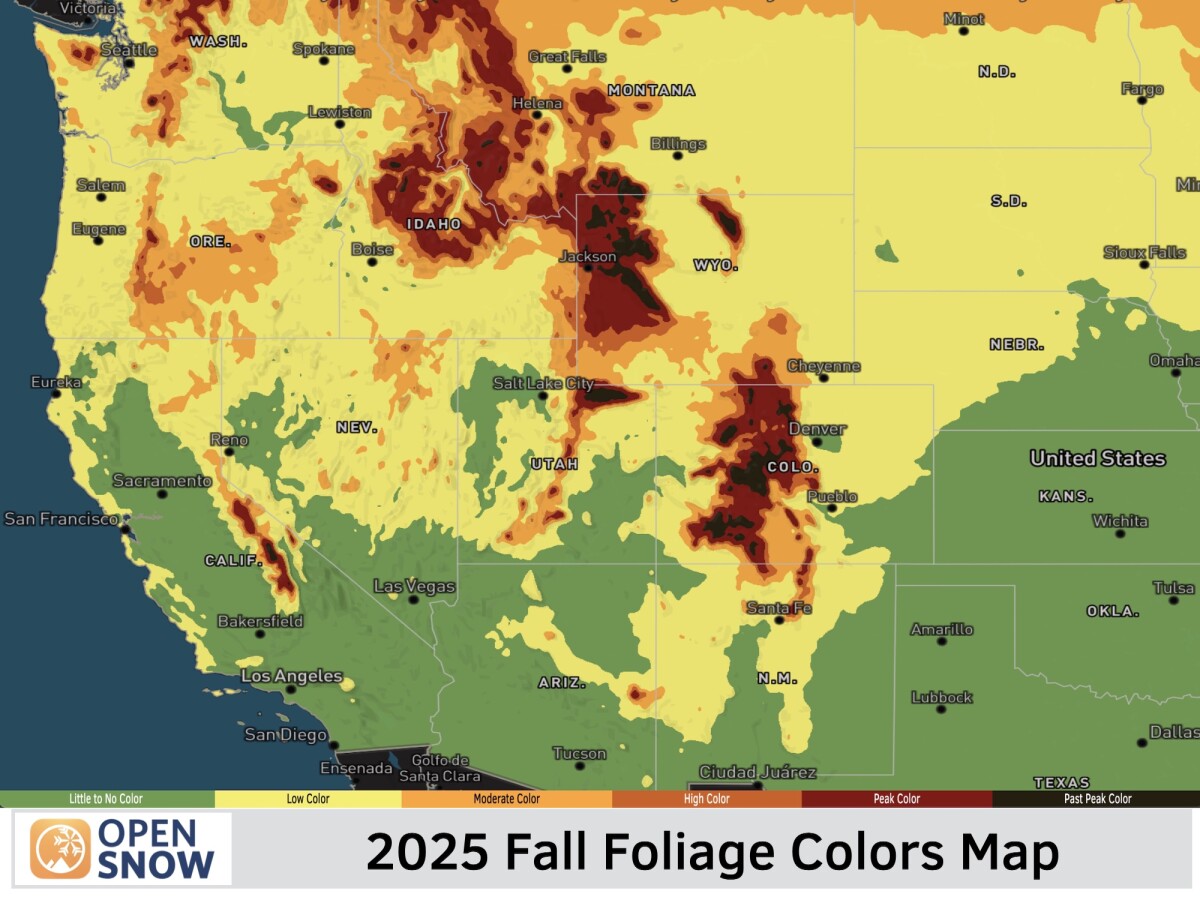Western US Daily Snow

By Alan Smith, Meteorologist Posted 1 year ago June 26, 2024
Rain and T-Storms for Many Areas Wednesday-Thursday
Summary
An active pattern will take hold across the West over the next two days. A low pressure system moving into the PNW will bring rain and thunderstorms to the Cascades and Northern Rockies. Monsoon moisture will also increase across the Southwest and Central Rockies with numerous thunderstorms capable of heavy rain and flash flooding.
Short Term Forecast
Big Picture Weather Pattern:
A trough of low pressure will move into the Pacific Northwest on Wednesday, resulting in showers and thunderstorms from the Cascades to the Northern Rockies and across Western Canada.
The North American Monsoon is also off to an early start this year with above-average moisture levels for late June across the Southwest. As the trough moves into the Western U.S., moisture will stream northward and eastward ahead of the trough with an uptick in thunderstorms across the Colorado Plateau and the Southern and Central Rockies.

5-Day Precipitation Forecast:
The heaviest rain over the next five days will occur across Western Colorado and New Mexico, both of which will see elevated flash flood potential. Rainfall won't be quite as heavy in Utah and Arizona, but vulnerable terrain such as slot canyons will be susceptible to flash flooding.
For northern areas, the Cascades, BC Coast Range, and Canadian Rockies will see the heaviest rainfall, while Glacier National Park and Western Montana will also pick up quite a bit.

Forecast for Wed (Jun 26) to Thu (Jun 27):
Numerous showers and thunderstorms can be expected across the Northwest, Southwest, and Rockies while the Sierra could see a few isolated thunderstorms. Flash flooding is a concern in slot canyons, dry washes, small streams, and burn scars in the Southwest.

Let's take a closer look at the projected 2-day rainfall by region. Note that rainfall amounts tend to be variable with thunderstorms, but this gives a good idea of which areas will be most favored for thunderstorms and heavy rain.
Arizona:
Northern parts of the state are most favored, including Flagstaff and the Grand Canyon, along with eastern portions of the Mogollon Rim.

Utah:
Eastern Utah (Moab and the La Sals) and Northern Utah (Wasatch and Uinta) will see some higher rainfall totals, but locally heavy amounts will pose a flash flood risk throughout Southern and Central Utah.

Here is the latest Flash Flood Forecast for Southern Utah issued by the NWS in Salt Lake City:

Colorado:
The Western Slope, including the Western San Juans and Grand Mesa, are favored for the heaviest rainfall with lighter amounts (but still locally heavy downpours and frequent lightning) expected further east near the Front Range.

New Mexico:
This will be an active pattern statewide, with the most widespread thunderstorm activity and heaviest rainfall potential for northern and western areas, as well as the Sacramento Mountains and Ruidoso area.

Pacific Northwest:
Rainfall will be heaviest across the North Cascades in Washington with lighter/more intermittent rainfall south of Mt. Hood in Oregon.

Northern Rockies:
The Salmon River Mountains in Central Idaho and Selkirk Range in Northern Idaho, along with the western ranges of Montana will also see fairly widespread shower/thunderstorm coverage with rain amounts of 0.25 to 0.75 inches for many areas. Lighter rain and more scattered thunderstorm coverage can be expected in Wyoming and Southern Idaho.

Forecast for Fri (Jun 28) to Sat (Jun 29):
Most areas will see a drying trend starting on Friday, but there are a few exceptions. Rain showers are expected to linger around Glacier National Park on Friday before drying out Saturday.
Lingering moisture will also result in scattered to numerous thunderstorms across Colorado, and for the eastern ranges of New Mexico.
The Northwest will see mostly dry conditions, but on Saturday night light showers are possible.

Forecast for Sun (Jun 30) to Mon (Jul 1):
Another trough will move across the Northwest, with showers and thunderstorms for the Olympics, Cascades, and Northern Rockies along with cooler temperatures. Increasing monsoon moisture will also contribute to more numerous thunderstorms across New Mexico, Eastern Arizona, and Southern Colorado.

Extended Forecast
Outlook for Tue (Jul 2) to Sat (Jul 6):
An active early-season monsoon will continue across the Southwest, resulting in frequent thunderstorms along with heavy rain potential. This will have somewhat of a moderating effect on temperatures compared to recent weeks.
West Central areas from California to Wyoming will be hot with limited moisture, while the Pacific Northwest will hang onto cooler temperatures with perhaps the occasional light shower.

Thanks so much for reading! Next update on Friday (June 28).
Alan Smith
About Our Forecaster




